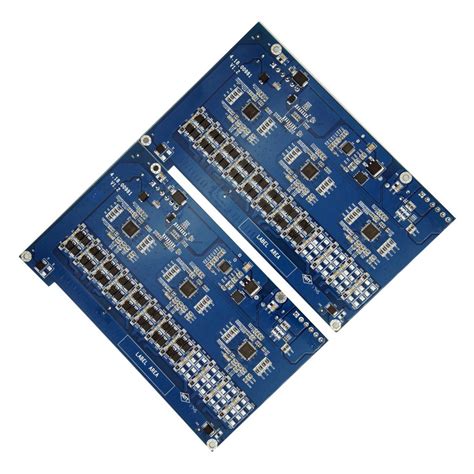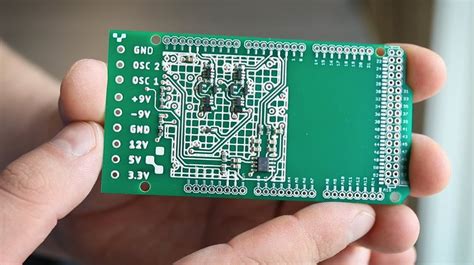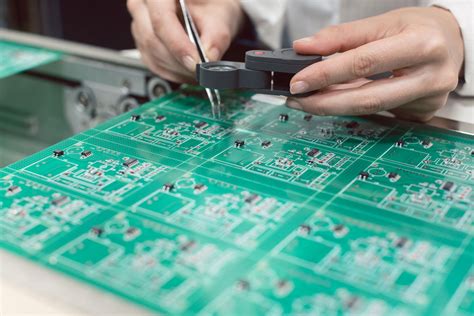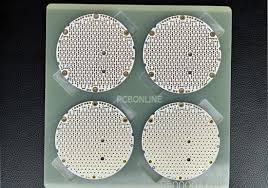2024 smart smt&pcb assembly
Innovations in 2024 Smart SMT & PCB Assembly Technologies
In 2024, the landscape of Surface Mount Technology (SMT) and Printed Circuit Board (PCB) assembly is witnessing remarkable innovations that are reshaping the electronics manufacturing industry. As the demand for more compact, efficient, and reliable electronic devices continues to grow, manufacturers are increasingly turning to advanced technologies to meet these challenges.
One of the most significant advancements in this field is the integration of artificial intelligence (AI) and machine learning algorithms into the assembly process.
These technologies are enabling manufacturers to optimize production lines, reduce errors, and enhance the overall quality of the final products.
AI-driven systems are now capable of analyzing vast amounts of data generated during the assembly process, allowing for real-time adjustments and predictive maintenance.
This not only minimizes downtime but also ensures that the equipment operates at peak efficiency. Moreover, machine learning algorithms can identify patterns and anomalies that may indicate potential defects, thus enabling early intervention and reducing waste. Consequently, manufacturers are experiencing increased yields and improved product reliability, which are critical in maintaining a competitive edge in the market.
In addition to AI, the use of advanced robotics in SMT and PCB assembly is revolutionizing the industry.
Collaborative robots, or cobots, are being deployed alongside human workers to perform repetitive and precise tasks with high accuracy. These robots are equipped with sophisticated sensors and vision systems that allow them to handle delicate components without causing damage. By automating these tasks, manufacturers can achieve higher throughput and consistency, while also freeing up human workers to focus on more complex and value-added activities.
Furthermore, the advent of 3D printing technology is making a significant impact on PCB prototyping and production.
This technology allows for rapid prototyping and customization of PCBs, reducing the time and cost associated with traditional manufacturing methods. With 3D printing, designers can quickly iterate and test new designs, leading to faster innovation cycles and a more agile response to market demands. Additionally, 3D printing enables the creation of complex geometries and multi-layered structures that were previously difficult or impossible to achieve, opening up new possibilities for electronic device design.
Another noteworthy innovation in 2024 is the development of advanced materials for PCB fabrication.
These materials offer improved thermal management, electrical performance, and environmental resistance, which are essential for the next generation of electronic devices. For instance, the use of flexible and stretchable substrates is gaining traction, particularly in the wearable technology sector. These materials allow for the creation of lightweight and conformable devices that can be integrated into clothing or directly onto the skin, expanding the potential applications of electronic devices.
Moreover, the push towards sustainability is driving the adoption of eco-friendly practices in SMT and PCB assembly.
Manufacturers are increasingly focusing on reducing the environmental impact of their operations by implementing energy-efficient processes and using recyclable materials. This shift not only aligns with global sustainability goals but also meets the growing consumer demand for environmentally responsible products.
In conclusion, the innovations in 2024 smart SMT and PCB assembly technologies are setting new standards for efficiency, quality, and sustainability in the electronics manufacturing industry. By embracing AI, robotics, 3D printing, advanced materials, and eco-friendly practices, manufacturers are well-positioned to meet the evolving needs of the market and drive the next wave of technological advancements. As these technologies continue to mature, they will undoubtedly play a pivotal role in shaping the future of electronics manufacturing.

The Role of AI in Enhancing 2024 SMT & PCB Assembly Processes
In the rapidly evolving landscape of electronics manufacturing, the integration of artificial intelligence (AI) into surface mount technology (SMT) and printed circuit board (PCB) assembly processes is poised to revolutionize the industry in 2024. As manufacturers strive for greater efficiency, precision, and cost-effectiveness, AI emerges as a pivotal tool in enhancing these assembly processes. By leveraging AI, companies can optimize production lines, reduce errors, and improve overall product quality, thereby meeting the increasing demands of the market.
To begin with, AI’s role in SMT and PCB assembly is multifaceted, encompassing various stages of the manufacturing process.
One of the primary applications of AI is in the optimization of production scheduling. By analyzing vast amounts of data, AI algorithms can predict potential bottlenecks and adjust schedules in real-time, ensuring that resources are allocated efficiently. This not only minimizes downtime but also enhances throughput, allowing manufacturers to meet tight deadlines without compromising on quality.
Moreover, AI-driven predictive maintenance is transforming how manufacturers approach equipment upkeep.
Traditional maintenance schedules often rely on fixed intervals, which can lead to unnecessary downtime or unexpected equipment failures. In contrast, AI systems can monitor machinery in real-time, identifying patterns and anomalies that may indicate impending failures. By predicting when maintenance is truly needed, manufacturers can perform timely interventions, thus extending the lifespan of equipment and reducing operational costs.
In addition to optimizing schedules and maintenance, AI significantly enhances quality control in SMT and PCB assembly.
Automated optical inspection (AOI) systems, powered by AI, are capable of detecting defects with remarkable accuracy. These systems utilize machine learning algorithms to identify even the most subtle deviations from design specifications, ensuring that only flawless products proceed to the next stage of production. Consequently, this reduces the likelihood of costly recalls and enhances customer satisfaction by delivering products that meet the highest standards.
Furthermore, AI facilitates the integration of advanced robotics into assembly lines.
Collaborative robots, or cobots, equipped with AI capabilities, can work alongside human operators, performing repetitive tasks with precision and consistency. This not only increases productivity but also allows human workers to focus on more complex and value-added activities. The synergy between human intelligence and AI-driven automation creates a more agile and adaptable manufacturing environment, capable of responding swiftly to changing market demands.
As we look towards the future, the role of AI in SMT and PCB assembly is expected to expand even further.
The advent of the Internet of Things (IoT) and Industry 4.0 technologies will generate an unprecedented amount of data, providing AI systems with more information to analyze and act upon. This will enable even greater levels of customization and personalization in electronics manufacturing, as AI systems learn to adapt to specific customer requirements and preferences.
In conclusion, the integration of AI into SMT and PCB assembly processes in 2024 represents a significant leap forward for the electronics manufacturing industry. By optimizing production schedules, enhancing quality control, and facilitating advanced automation, AI is set to redefine how manufacturers operate, ultimately leading to more efficient, reliable, and cost-effective production. As technology continues to advance, the potential for AI to further enhance these processes is boundless, promising a future where innovation and efficiency go hand in hand.

Sustainability Trends in 2024 Smart SMT & PCB Manufacturing
In 2024, the landscape of smart Surface Mount Technology (SMT) and Printed Circuit Board (PCB) manufacturing is undergoing a significant transformation, driven by an increasing emphasis on sustainability. As the electronics industry continues to expand, the environmental impact of manufacturing processes has come under scrutiny, prompting companies to adopt more sustainable practices. This shift is not only a response to regulatory pressures but also a reflection of growing consumer demand for environmentally responsible products.
One of the key trends in sustainable SMT and PCB manufacturing is the adoption of energy-efficient technologies.
Manufacturers are increasingly investing in equipment that reduces energy consumption, thereby lowering their carbon footprint. For instance, modern reflow ovens and pick-and-place machines are designed to operate with greater precision and efficiency, minimizing energy waste. Additionally, the integration of smart sensors and IoT technologies allows for real-time monitoring and optimization of energy use, further enhancing sustainability.
Moreover, the use of eco-friendly materials is gaining traction in the industry.
Traditional PCBs often contain hazardous substances such as lead and brominated flame retardants, which pose environmental and health risks. In response, manufacturers are exploring alternatives such as lead-free solder and halogen-free laminates. These materials not only reduce the environmental impact but also comply with stringent regulations like the Restriction of Hazardous Substances (RoHS) directive, which limits the use of specific hazardous materials in electronic products.
Another significant trend is the implementation of circular economy principles in SMT and PCB manufacturing.
Companies are increasingly focusing on designing products with end-of-life considerations in mind, facilitating easier recycling and reuse of components. This approach not only conserves resources but also reduces waste, aligning with global efforts to promote sustainable consumption and production patterns. For example, modular design techniques allow for the easy replacement of faulty components, extending the lifespan of electronic devices and reducing the need for new materials.
Furthermore, advancements in digitalization and automation are playing a crucial role in enhancing sustainability in the manufacturing process.
The use of digital twins and advanced simulation tools enables manufacturers to optimize production processes, reducing material waste and improving yield rates. Automation, on the other hand, minimizes human error and increases precision, leading to more efficient use of resources. These technologies collectively contribute to a more sustainable manufacturing ecosystem by streamlining operations and reducing the environmental impact.
In addition to technological innovations, collaboration across the supply chain is essential for achieving sustainability goals.
Manufacturers are increasingly working with suppliers to ensure that raw materials are sourced responsibly and that production processes adhere to environmental standards. This collaborative approach not only enhances transparency but also fosters a culture of sustainability throughout the supply chain.
As we look to the future, it is clear that sustainability will continue to be a driving force in the evolution of smart SMT and PCB manufacturing. Companies that embrace these trends are likely to gain a competitive edge, as consumers and regulators alike prioritize environmentally responsible practices. By investing in energy-efficient technologies, adopting eco-friendly materials, implementing circular economy principles, leveraging digitalization and automation, and fostering collaboration across the supply chain, the industry can pave the way for a more sustainable future. In doing so, it will not only meet the demands of today but also ensure the well-being of future generations.

Challenges and Solutions in 2024 Smart SMT & PCB Assembly
In 2024, the landscape of Surface Mount Technology (SMT) and Printed Circuit Board (PCB) assembly is undergoing significant transformation, driven by rapid technological advancements and evolving market demands. As the industry strives to meet the increasing complexity of electronic devices, several challenges have emerged, necessitating innovative solutions to maintain efficiency and quality.
One of the primary challenges faced by the SMT and PCB assembly sector is the miniaturization of components.
As consumer electronics become more compact, the demand for smaller, more densely packed PCBs has surged. This trend poses difficulties in terms of precision and accuracy during assembly. To address this, manufacturers are increasingly adopting advanced robotics and automation technologies. These systems offer enhanced precision, enabling the placement of tiny components with remarkable accuracy, thus reducing the risk of defects and improving overall product reliability.
Moreover, the integration of artificial intelligence (AI) and machine learning (ML) into assembly processes is revolutionizing the industry.
AI-driven systems can analyze vast amounts of data in real-time, identifying patterns and predicting potential issues before they arise. This predictive capability allows for proactive maintenance and optimization of assembly lines, minimizing downtime and enhancing productivity. Additionally, machine learning algorithms can continuously improve the accuracy of component placement and soldering processes, further mitigating the challenges posed by miniaturization.
Another significant challenge in 2024 is the increasing complexity of PCB designs.
As devices become more multifunctional, PCBs must accommodate a greater number of components and interconnections. This complexity can lead to higher error rates and longer production times. To overcome this, manufacturers are turning to advanced design software that facilitates the creation of intricate PCB layouts. These tools enable engineers to simulate and test designs virtually, identifying potential issues before physical production begins. By streamlining the design process, companies can reduce errors and accelerate time-to-market.
In addition to design complexities, the industry is also grappling with supply chain disruptions.
The global nature of electronics manufacturing means that any disruption in the supply chain can have far-reaching consequences. To mitigate this risk, companies are increasingly adopting digital supply chain solutions. These platforms provide real-time visibility into supply chain operations, allowing manufacturers to anticipate disruptions and adjust their strategies accordingly. By leveraging data analytics and blockchain technology, companies can enhance transparency and traceability, ensuring a more resilient supply chain.
Furthermore, sustainability has become a critical consideration in SMT and PCB assembly.
As environmental concerns grow, manufacturers are under pressure to reduce waste and energy consumption. In response, many are implementing eco-friendly practices, such as recycling materials and optimizing energy usage in production facilities. Additionally, the development of lead-free soldering techniques and the use of biodegradable materials are gaining traction, aligning the industry with global sustainability goals.
In conclusion, the challenges faced by the SMT and PCB assembly industry in 2024 are multifaceted, encompassing technological, logistical, and environmental dimensions. However, through the adoption of advanced technologies such as automation, AI, and digital supply chain solutions, manufacturers are well-equipped to navigate these challenges. By embracing innovation and sustainability, the industry is poised to meet the demands of an increasingly complex and dynamic market, ensuring continued growth and success in the years to come.






